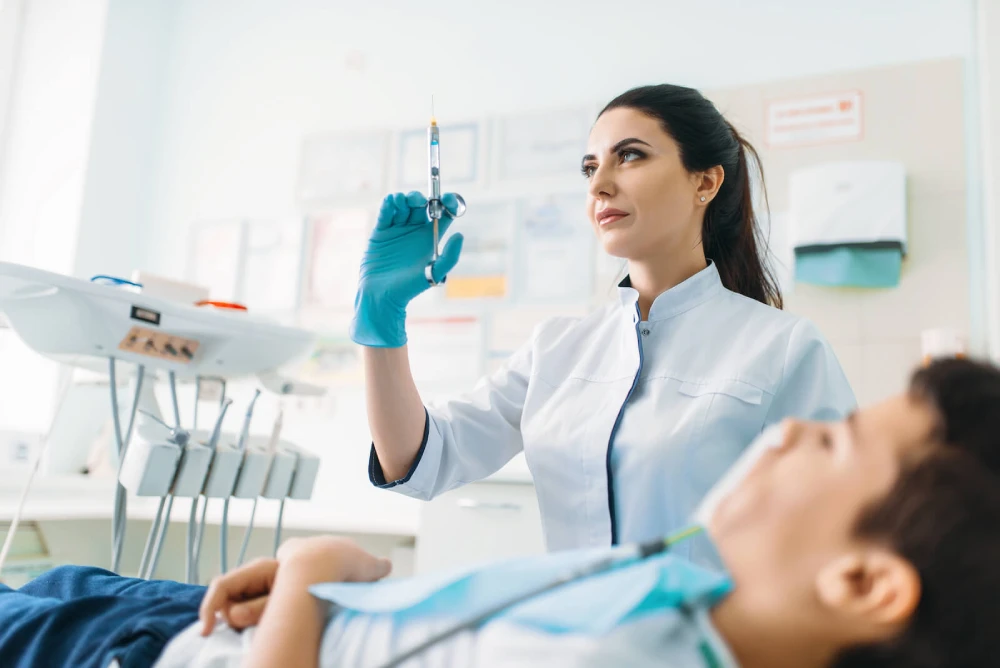التقرحات الوريدية
ما هي قرحة الساق الوريدية؟
تُعتبر القُرَح الوريدية المرحلة الأكثر تقدّمًا من أمراض الأوردة المزمنة. وهي جروح في الساق تحدث نتيجة ضعف الدورة الدموية الوريدية في الساقين. فعندما تعجز الأوردة عن ضخ الدم بشكل كافٍ نحو القلب، يتجمّع الدم داخلها مما يؤدي إلى تلف الأنسجة وظهور القرحة.
عادةً ما تسبق القُرَح الوريدية أعراض مثل الشعيرات الدموية الظاهرة (العنكبوتية)، الدوالي، تورّم الساقين، وتغيرات جلدية تُعرف بالتهاب الجلد الركودي الوريدي.
تبدأ القُرَح الوريدية كجروح سطحية بسيطة في الجلد، لكنها قد تكبر وتزداد سوءًا إذا لم يتم علاجها. لذلك من المهم البدء في علاج القرح الوريدية مبكرًا لضمان أفضل فرص الشفاء.
ما هي عوامل الخطر للإصابة بقرحة الساق الوريدية؟
من أبرز العوامل التي تزيد من احتمالية حدوث تقرحات الساق الوريدية:
- التقدم في العمر
- تعدد مرات الحمل
- مرض السكري
- التدخين
- الطول الزائد عند بعض الأشخاص
- الإصابة بالدوالي
- السمنة وزيادة الوزن
- إصابة سابقة في الساق
- التهاب الأوردة (Phlebitis)
- قلة الحركة أو الوقوف الطويل
نحن نعلم أن لديك بعض الأسئلة والمخاوف
Why do venous ulcers occur?
Venous leg ulcers occur when there is a buildup of pressure inside the veins. Healthy veins regulate blood flow using tiny, one-way valves that keep your blood flowing towards your heart. If the valves have become weakened or damaged the blood will reflux (flows backwards) and pool inside the vein.
Over time, pooled blood increases pressure in the vein and fluid begins to seep into surrounding tissues. This is known as fluid retention or edema. Excess fluid irritates the dermal (skin) tissue causing inflammation and, over time, breakdown. Broken down tissue results in a chronic wound.
How do venous ulcers form?
Venous ulcers are also commonly associated with varicose veins. At first, the skin may become red and irritated and be mistaken for a rash or bug bite. As the condition progresses, the affected area may start to look more like a blister or bruise, the skin may become dry or cracked, and it may begin to weep. As the tissue continues to break down, one or more small sores will form. These may heal on their own only to reform again and again. Eventually the wound will get deeper and fail to heal without special care.
Symptoms to look out for include:
- Swelling of the legs
- Thickened or hardened skin
- Skin that is discoloured (red, purple, or brown)
- Small blisters
- Cracked or dry skin
Why Venous Ulcers are difficult to heal?
The exact reason why it is so difficult for venous ulcers to heal is still not fully understood. We believe it is, at least in part, due to pooled venous blood depriving surrounding tissues of the oxygen and nutrients they need to heal. This is why solving the underlying circulatory problems can aid recovery and, in most cases, stop the ulcer from coming back.
Are venous ulcers painful?
Everyone experiences pain differently. As such, some patients may not experience any pain with venous leg ulcers. Others may experience symptoms ranging from discomfort and aching to deep, chronic pain. Venous ulcers may also be accompanied by cellulitis, an infection where the skin and subcutaneous tissues around the wound become inflamed, warm, painful, and tender to the touch.
Do venous ulcers bleed?
Usually not. Venous ulcers tend to be large, shallow sores that have a yellow-white film on top. They are often wet or weeping. However, there are typically no large blood vessels in the area and, therefore, very little bleeding.
Do venous ulcers itch?
Yes, venous ulcers frequently do itch. However, try not to scratch because this will only further irritate and damage the skin. Scratching can also introduce bacteria from under your nails to the area which increases the risk of infection.
How are venous ulcers treated?
Typically, venous leg ulcers do not heal without specialized treatment at a healthcare facility.
After full clinical assessment and imaging of the veins by duplex ultrasound and more advanced imaging modalities like CT or MRI, the most common treatments for venous leg ulcers include:
Compression Therapy – Compression devices, like compression stockings or bandages, is the first line treatment for venous leg ulcers, however many ulcers return once compression therapy is discontinued.
Advanced Wound Care – Foam dressings, antimicrobials, and antiseptics, as well as skin grafting for advanced, non-healing wounds
Interventions – Debridement, endovenous thermal ablation, sclerotherapy, and other surgical or endovascular treatment methods may be recommended for venous leg ulcers that do not heal after traditionally treatment
Are there complications linked to venous ulcers?
A venous ulcer is usually easy to identify visually, based on its location in the lower leg or ankle area. It may have discolored skin around the wound, hardened skin at the wound borders, and intensely red skin. Venous leg ulcers tend to be quite painful, and it’s also common to have cramping and leg heaviness with this condition. Living with venous ulcers can make it more difficult for you to be mobile on your own, which can take a toll on your quality of life. It’s also common for venous ulcers to be accompanied by infection, pain and even odor due to their wound.
Do venous ulcers heal?
Treatment depends on many factors, including your health, how your symptoms impact your day-to-day life, and how long you’ve been dealing with the venous ulcer. iVein Clinic treats the causative vein disease because that’s the most effective way to eliminate the veins causing your problems.


